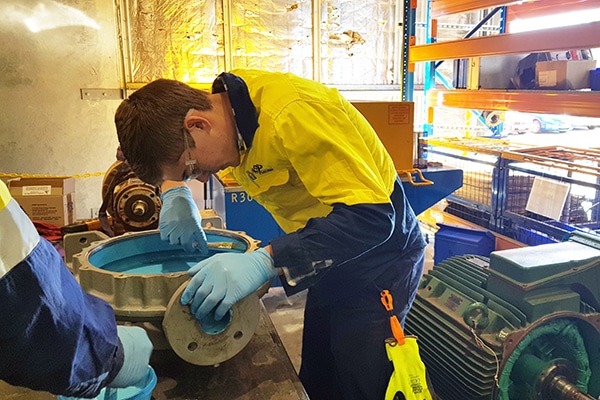
Pumps are only as good as they are efficient, and various issues can lead to inefficiencies. It’s important to identify and resolve issues quickly so your pumps can get back to work.
Today, Allied Pumps is sharing some of the best practices on how to self-identify and correct pumping problems. See our useful tips on how to resolve each issue.
If the flow is abnormal, this is a definite sign of a problem. Is the decrease visible? Is the pump taking more time to do the same job? Its sluggish operation may be due to a collapsed suction hose lining. Other root causes could be a leaking gasket, a plugged suction line, or a damaged impeller or wear plate.
To pinpoint the culprit, measure the discharge pressure and suction vacuum. Compare, if available, the initial readings taken at installation. Look for any high abnormal readings. A higher-than-normal discharge could indicate a clogged discharge line, a closed valve or an obstruction. It is good practice to install gauges approximately two to four pipe diameters from the pump.
The most common noise is that of that of rocks in a can. This could indicate cavitation, which may be due to a suction lift being too high, a too long suction hose, plugged or collapsed lining, a blocked strainer or some combination of all of these.
Failing bearings can also cause extreme noise. When considering a noise, categorize it as mechanical or hydraulic. Run the pump for a few moments without water. If the noise is gone, it’s mechanical. Gauge reading will direct you the problem side of the system if it’s a hydraulic noise.
If a pump’s suction check valve is clogged, the strainer may be the wrong size or the face clearance could be too wide. The strainer may be stuck in mud, plugging the suction side.
To resolve frequent clogging in a pump:
This is almost always the result of restriction of the flow of liquid into or out of the pump. It could also be improper impeller clearance which may be slowing re-priming. There could be other issues related to circulation. If the pump is hot, do not open. Wait until it cools.
To solve pump overheating:
To check for air leaks, use a vacuum gauge to test the suction line, fittings, and pipe plugs seal. It should be airtight. Use pipe dope to seal gauge threads and pipe plugs.
If a vacuum gauge falls off after shutdown, atmospheric pressure is entering the suction pipe causing the pump to lose its static lift. Fix this by replacing the suction flap valve if worn. Check for air leaks if the product returns to the sump. Replace leaky seals and badly worn hoses, if necessary.
The problem may be due to issues with the pump. You’ll need to investigate these areas.

Pump still not working? At Allied Pumps, we provide expert pump inspection and repair services at our Darwin, Kalgoorlie, and Canning Vale facilities. Our experienced technicians can also carry out on-site inspections and repairs if needed—minimising downtime and keeping your systems running smoothly.
Contact us today to book your service or browse our range of industrial pumps.

Contact us to learn about how we can help you with your pump needs.
CALL US NOW EMAIL US